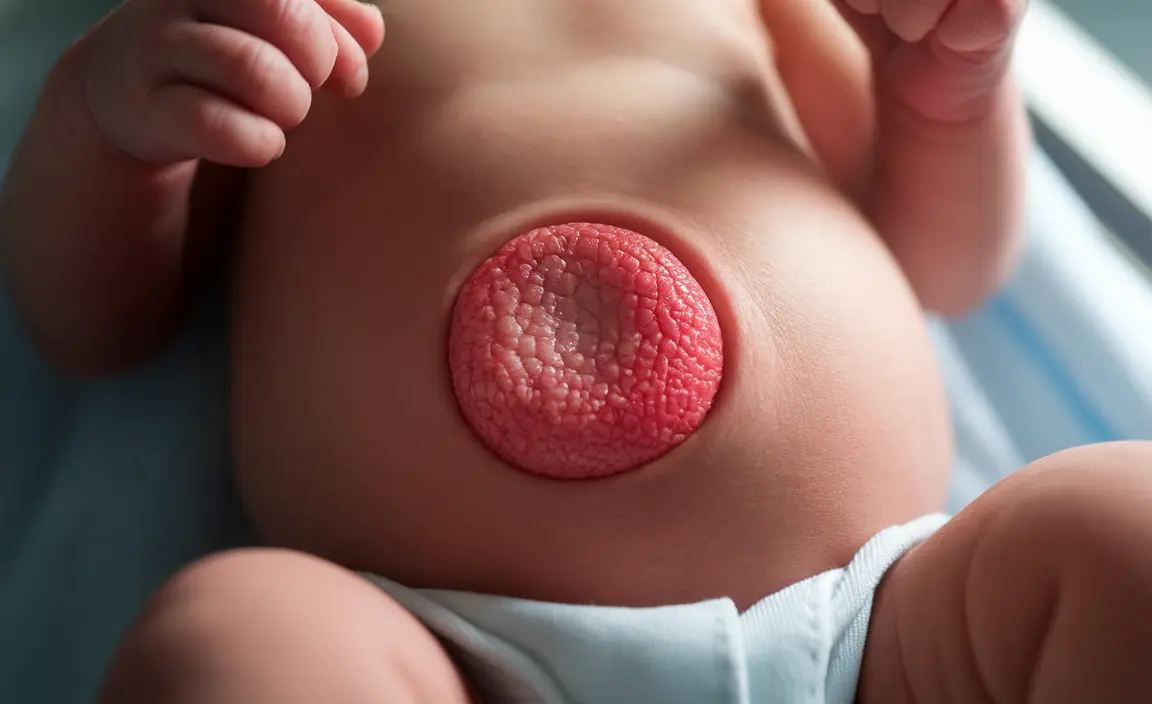When welcoming a new baby, parents often have questions about their infant's umbilical cord care and healing. One common concern that may arise during this period is the development of an umbilical granuloma – a small, pink-red tissue growth that can appear after the umbilical cord stump falls off. Understanding this condition is crucial for proper care and knowing when to seek medical attention.
This comprehensive guide will help you understand what an umbilical granuloma is, how to identify it, and the various treatment options available. We'll also discuss important signs to watch for and when to consult your healthcare provider.
What Is an Umbilical Granuloma?
An umbilical granuloma is a soft, round, moist tissue growth that typically appears as a small pink or red bump at the base of the belly button. This condition occurs in approximately 1 in 500 newborns during the healing process after their umbilical cord falls off. While it's generally harmless, proper identification and treatment are essential for your baby's comfort and health.
Signs and Symptoms
Identifying an umbilical granuloma involves looking for these characteristic signs:
- Small, round growth (usually 3-10 millimeters in size)
- Pink or red in color
- Soft and moist appearance
- May secrete a clear or yellow discharge
- Usually painless
- Doesn't typically cause discomfort to the baby
Common Causes and Risk Factors
Understanding why umbilical granulomas form can help parents better manage this condition. These growths typically develop due to:
- Incomplete healing of the umbilical cord site
- Excessive moisture in the umbilical area
- Delayed separation of the umbilical cord
- Improper cord care techniques
Treatment Options
Medical Treatments
Healthcare providers typically recommend one or more of the following treatments:
- Silver nitrate application (most common treatment)
- Surgical removal (for persistent cases)
- Cryotherapy
- Chemical cauterization
Home Care Guidelines
While medical treatment is necessary, proper home care is essential for healing:
- Keep the area clean and dry
- Change diapers frequently
- Fold the diaper below the umbilical area
- Avoid using harsh soaps or chemicals
- Monitor for signs of infection
Prevention Strategies
While not all umbilical granulomas can be prevented, these measures may help reduce the risk:
- Proper umbilical cord care
- Maintaining a clean, dry navel area
- Following healthcare provider instructions for newborn care
- Regular monitoring of the healing process
Frequently Asked Questions
What causes an umbilical granuloma to form in newborns?
An umbilical granuloma typically forms when there's incomplete healing after the umbilical cord stump falls off. This results in excess granulation tissue forming at the base of the belly button, often due to prolonged moisture exposure or delayed healing.
How can I tell if my baby's umbilical granuloma is infected?
Signs of infection include redness extending beyond the granuloma, swelling, increased warmth around the area, foul-smelling discharge, fever, or irritability in your baby. If you notice any of these symptoms, contact your healthcare provider immediately.
What are the safest and most effective treatments for umbilical granuloma at home and in a medical setting?
The most effective medical treatment is silver nitrate application performed by a healthcare provider. At home, keeping the area clean and dry is essential. Never attempt to treat the granuloma with home remedies without consulting your doctor first.
How long does it usually take for an umbilical granuloma to heal with treatment?
With proper treatment, most umbilical granulomas heal within 1-2 weeks. Silver nitrate treatment typically shows results within a few days to a week, though some cases may require multiple applications.
When should I seek medical help for an umbilical granuloma on my baby?
Seek medical attention if you notice a persistent pink or red growth in your baby's umbilical area, especially if it's accompanied by discharge. Also consult your doctor immediately if you observe signs of infection, including fever, spreading redness, or foul odor.




